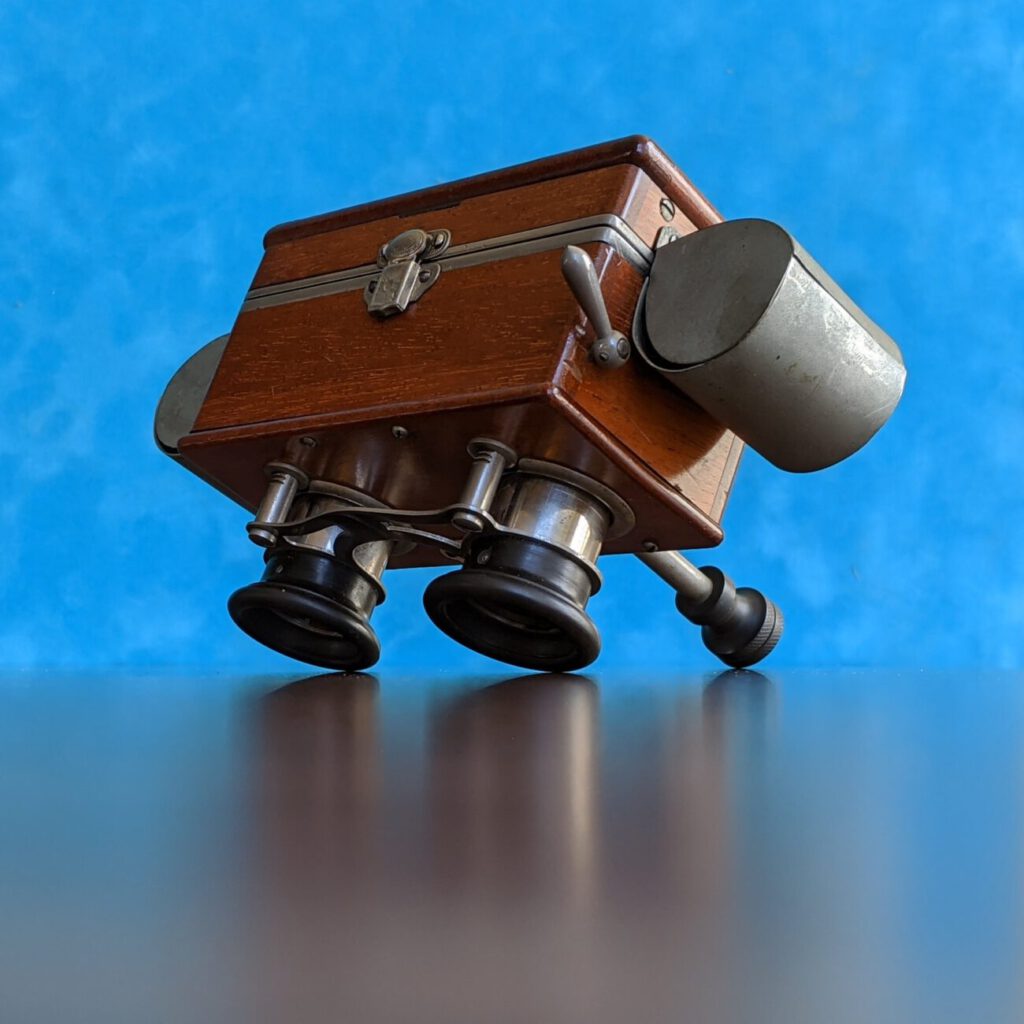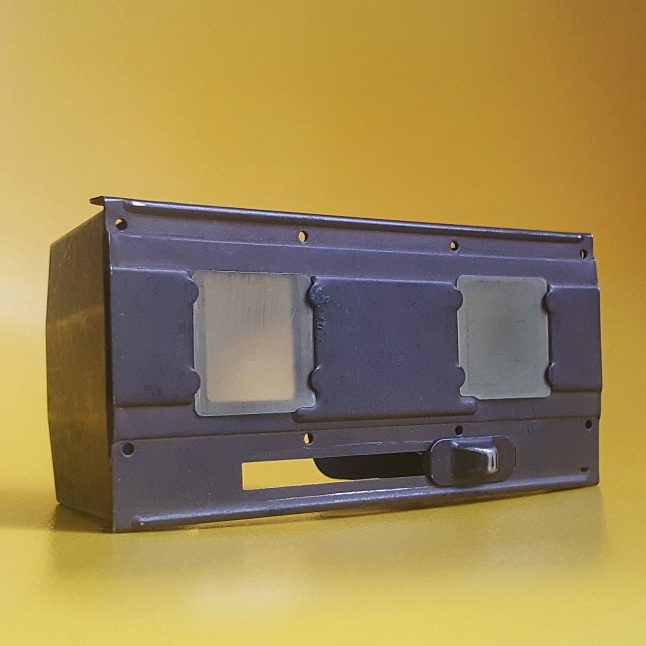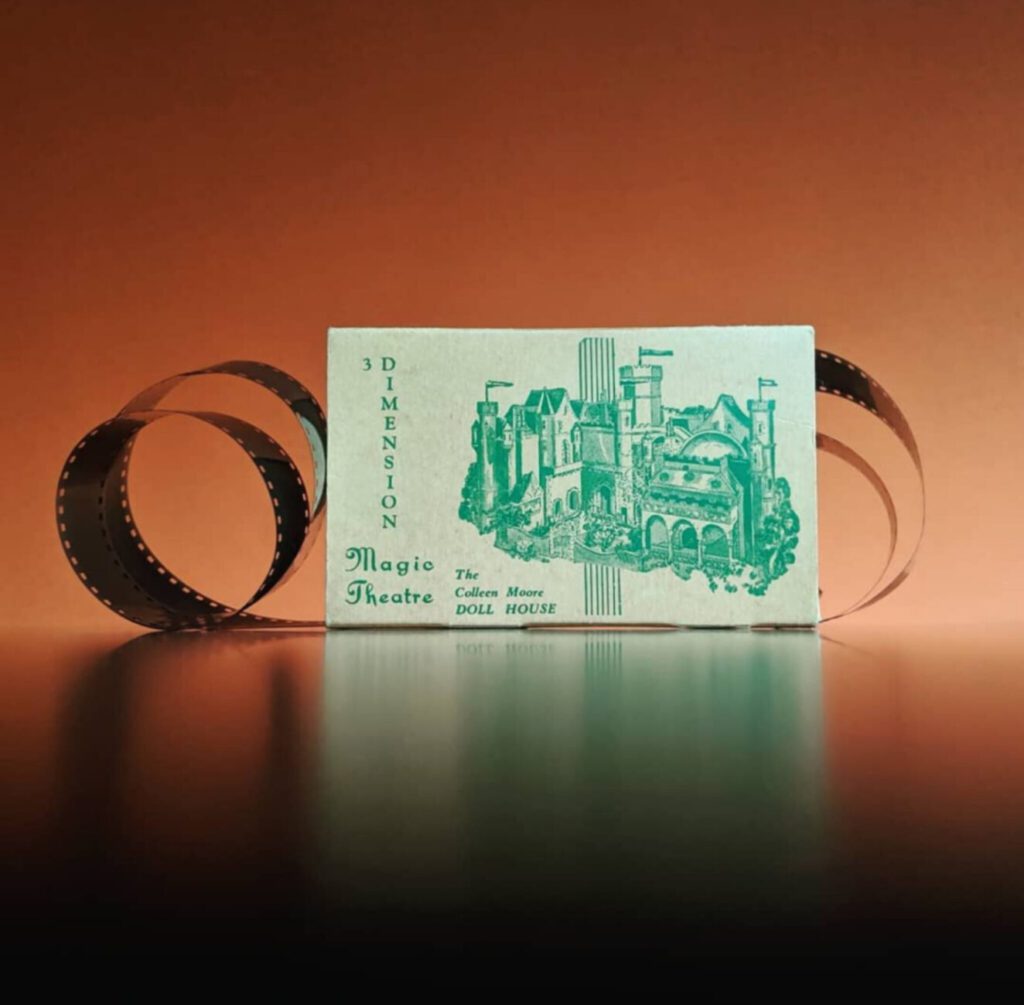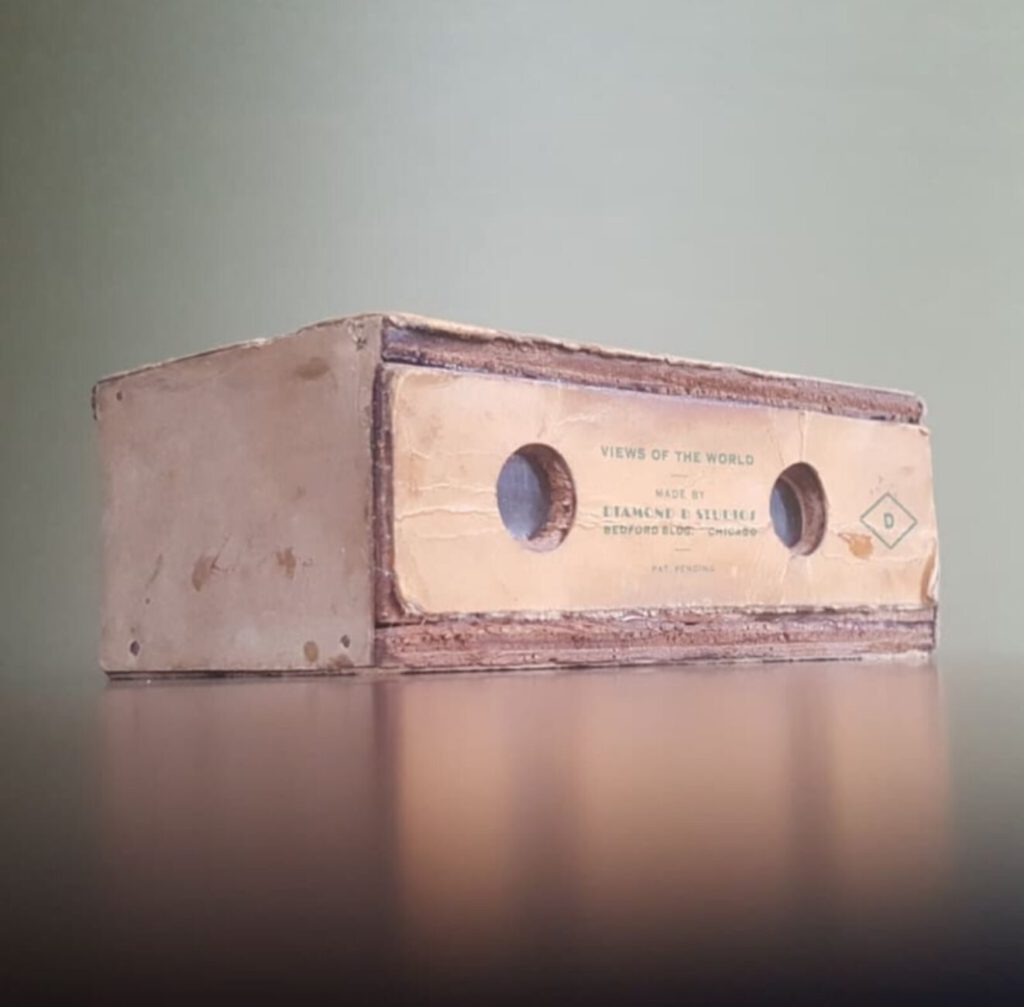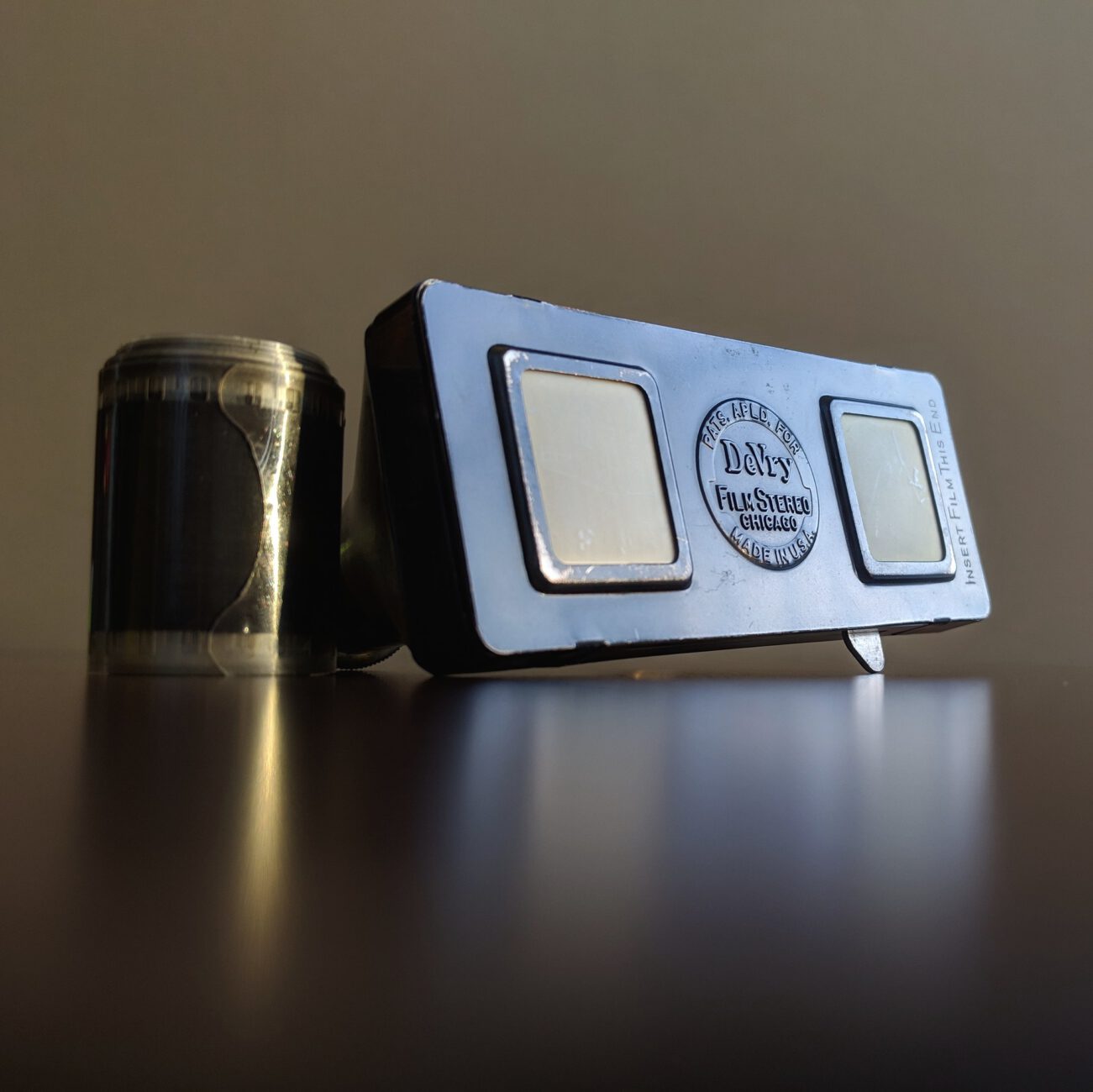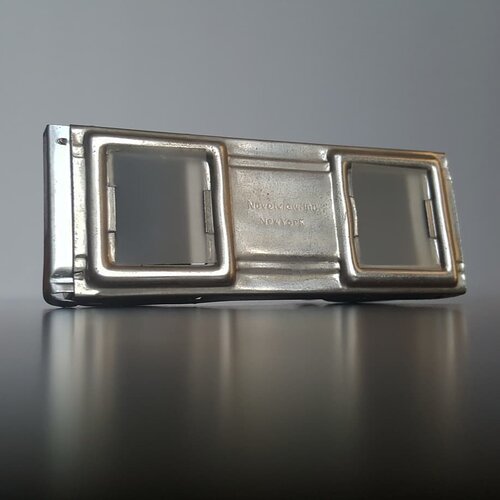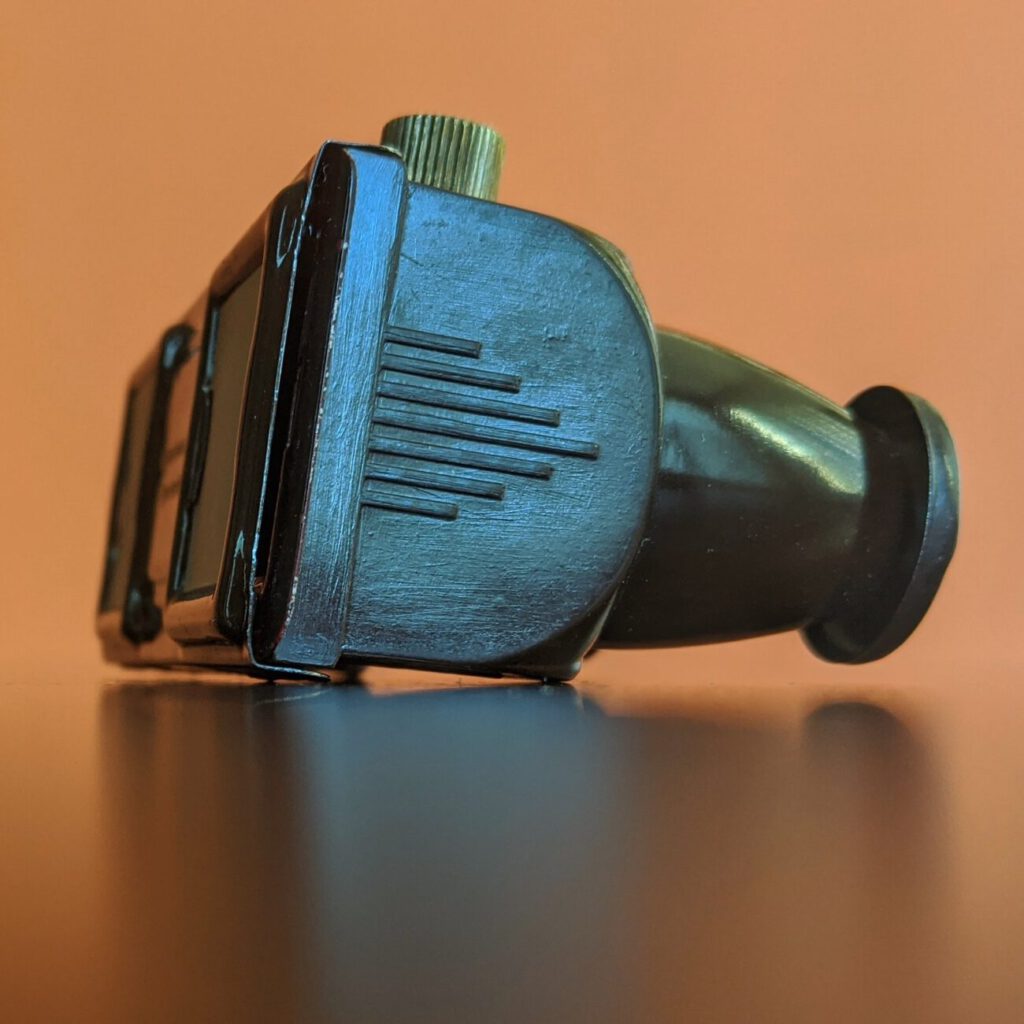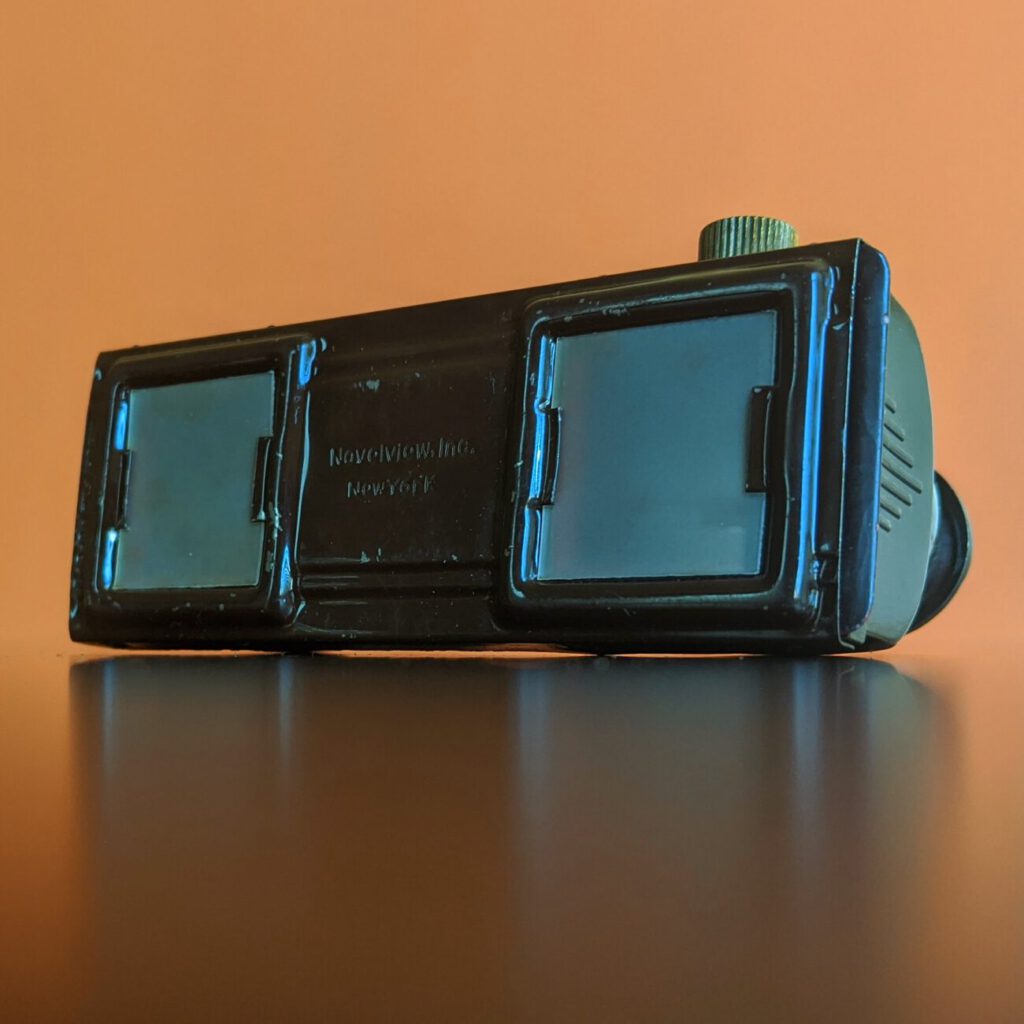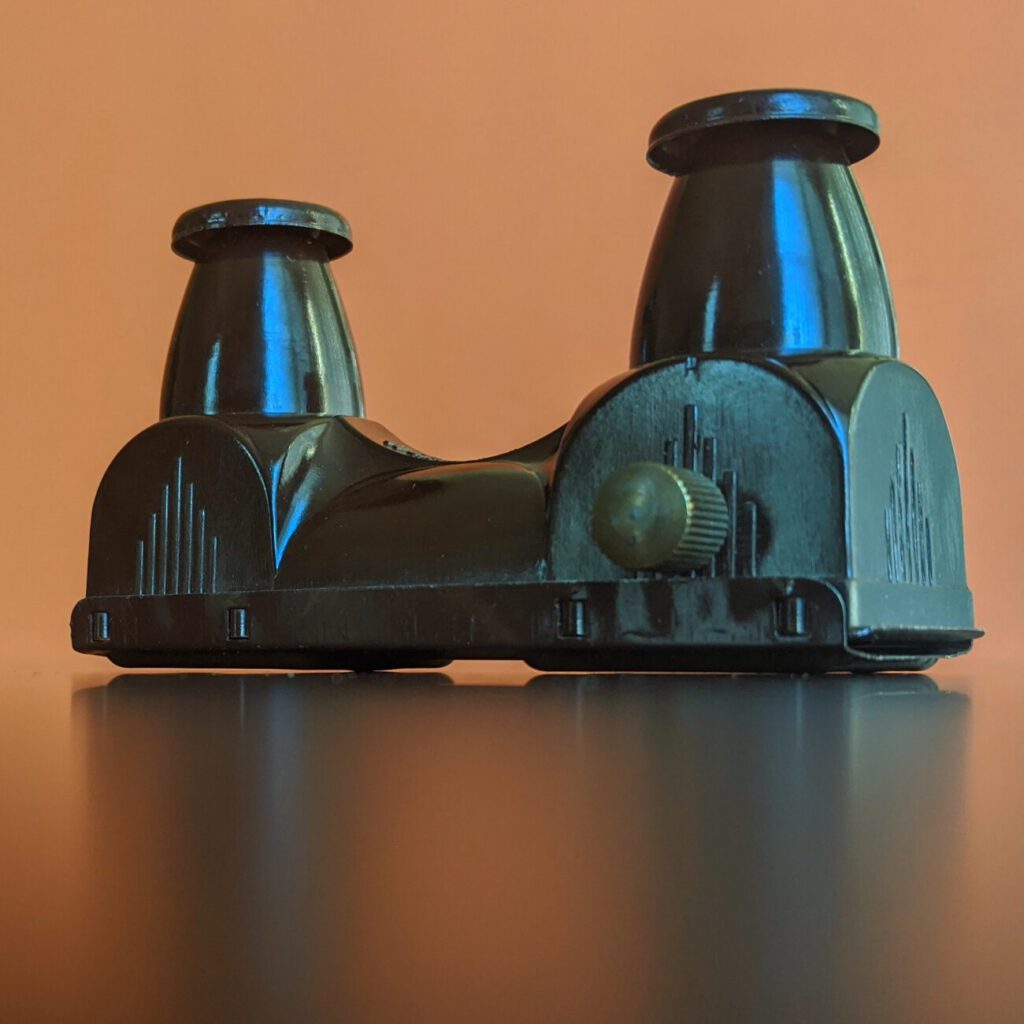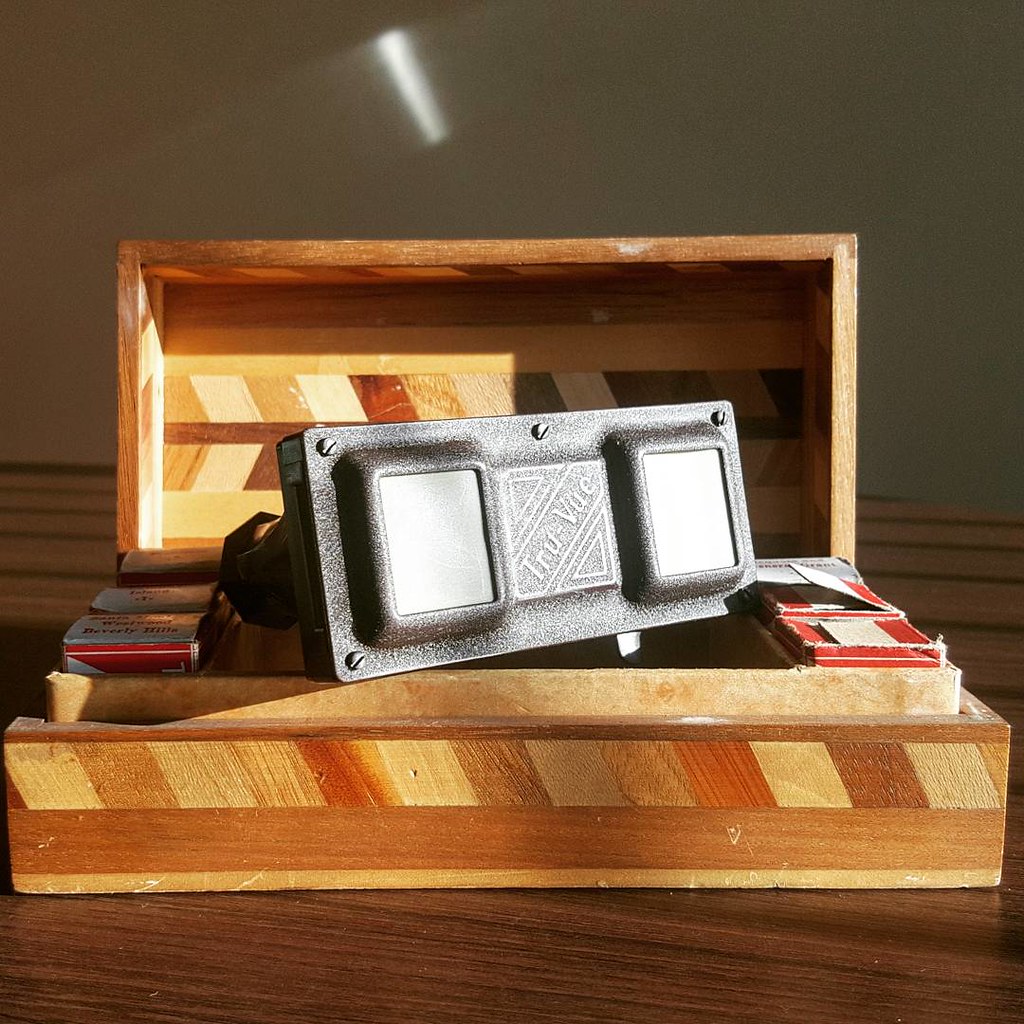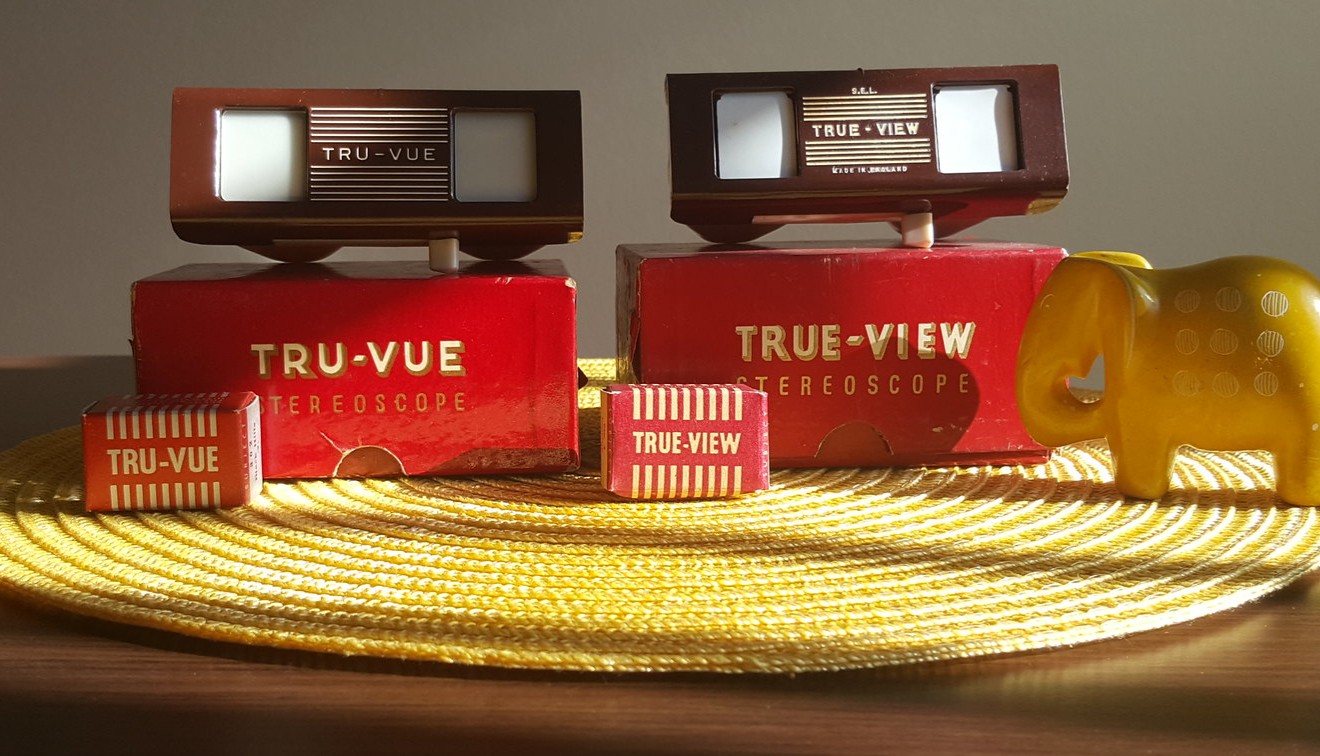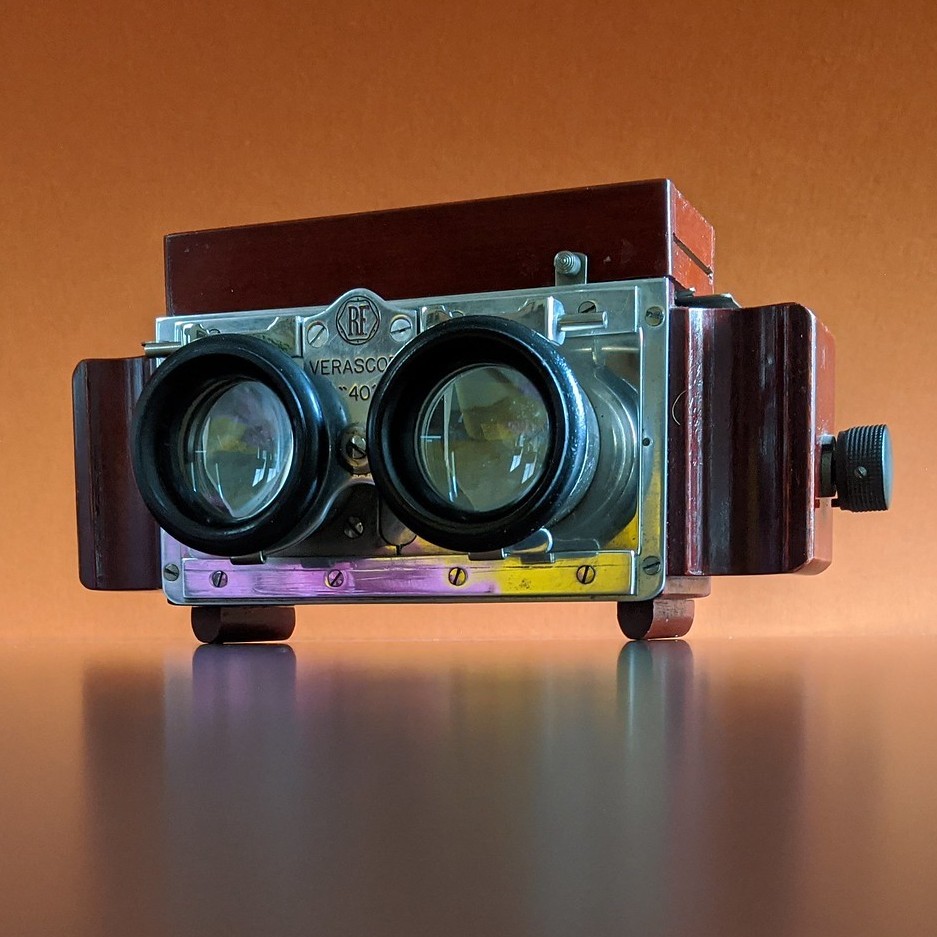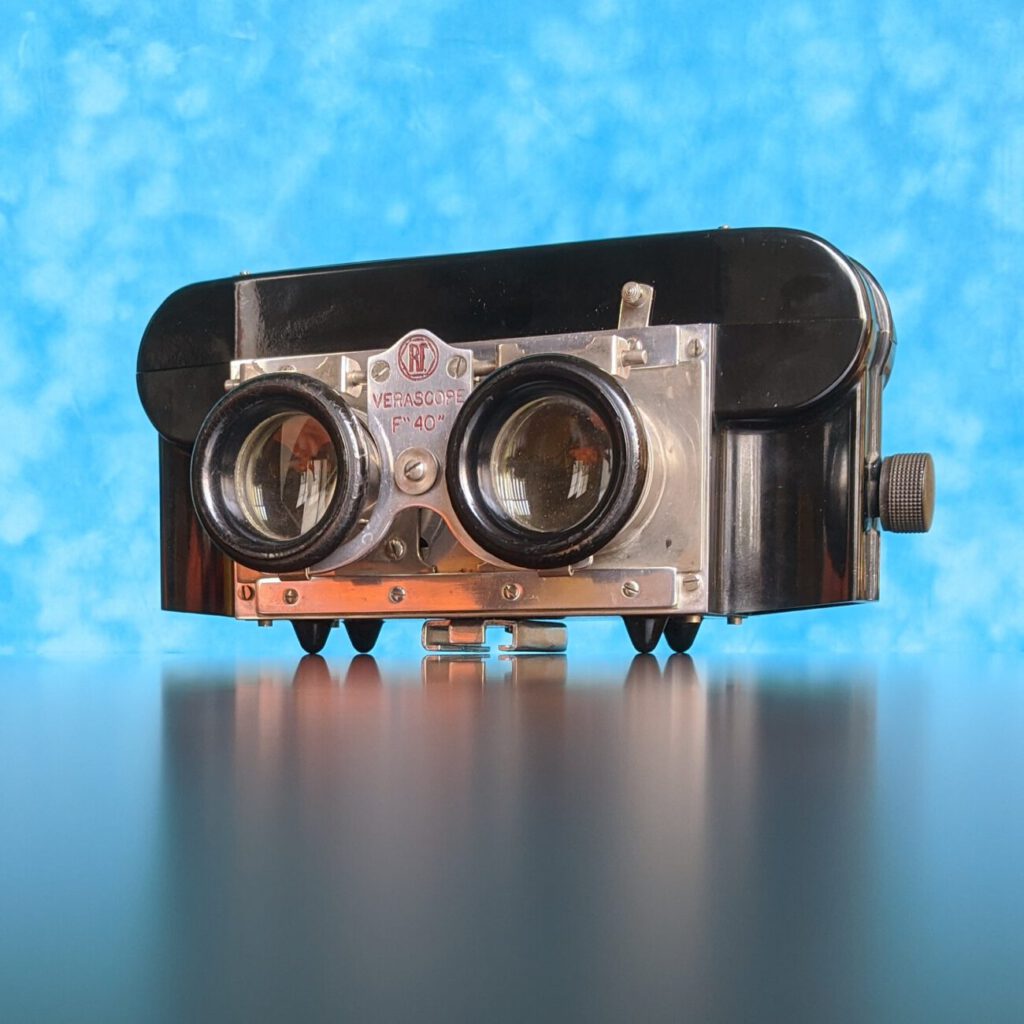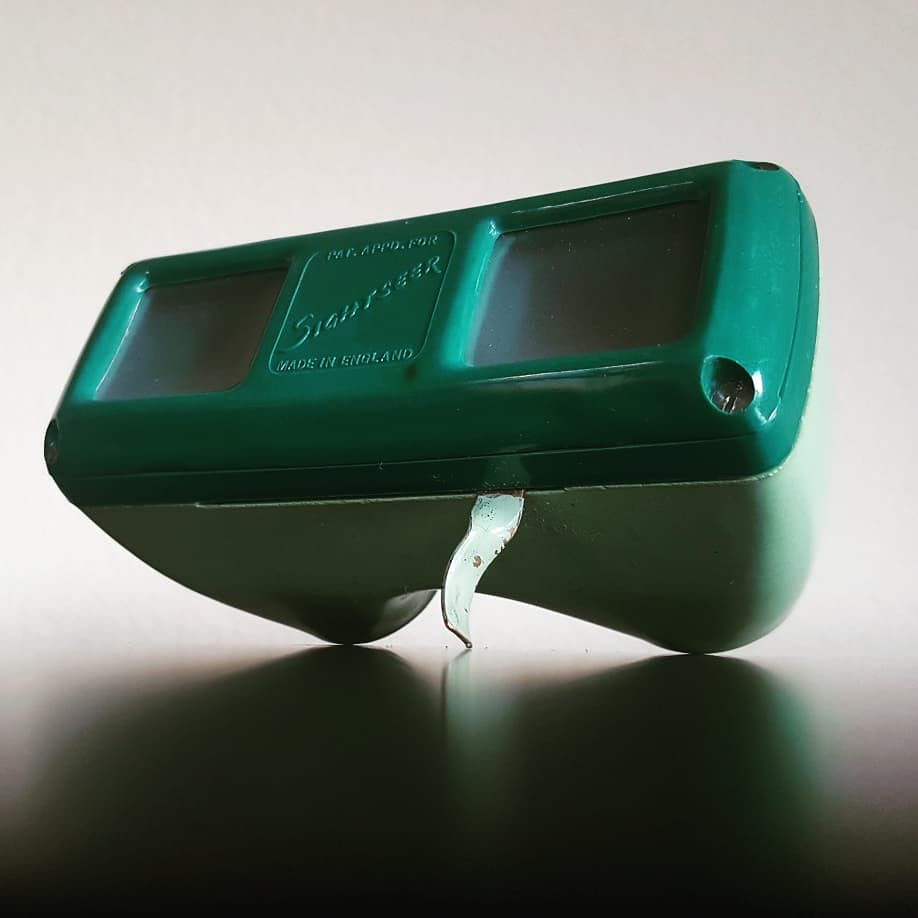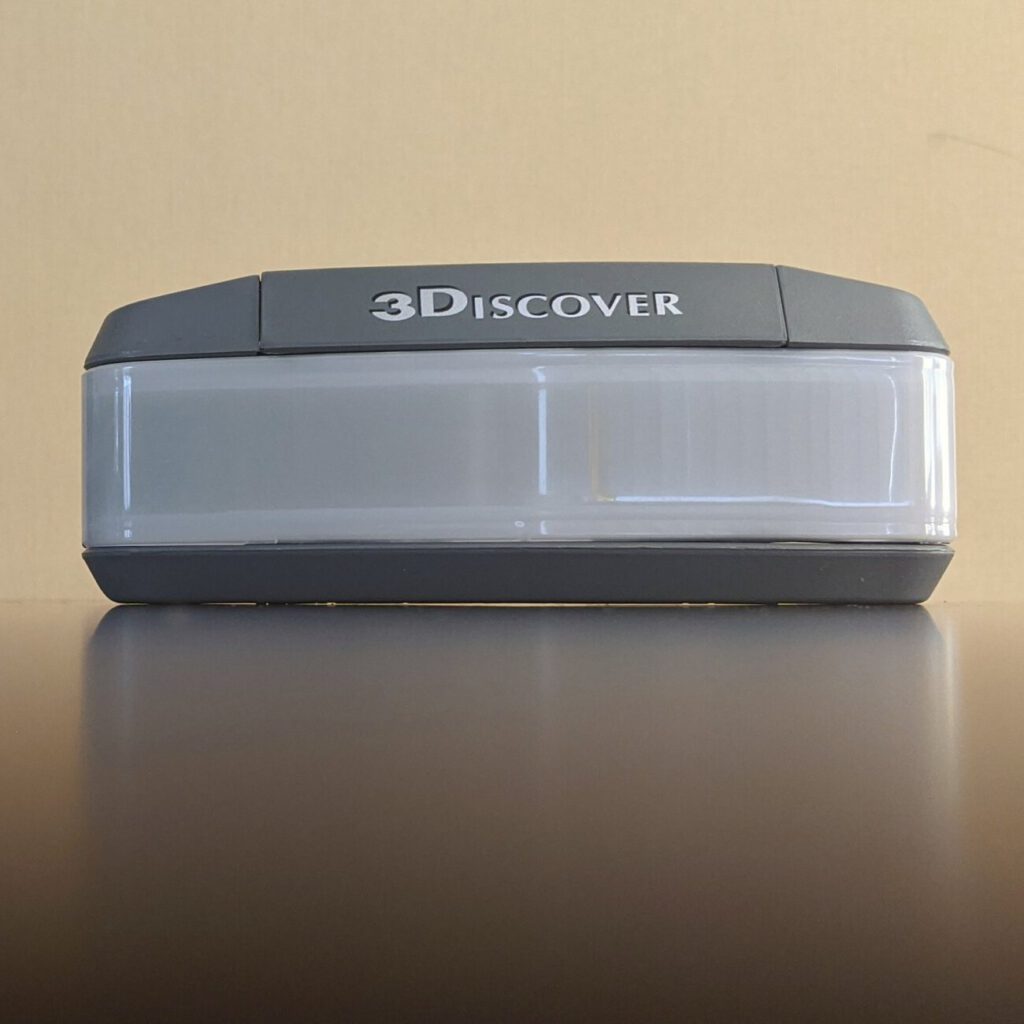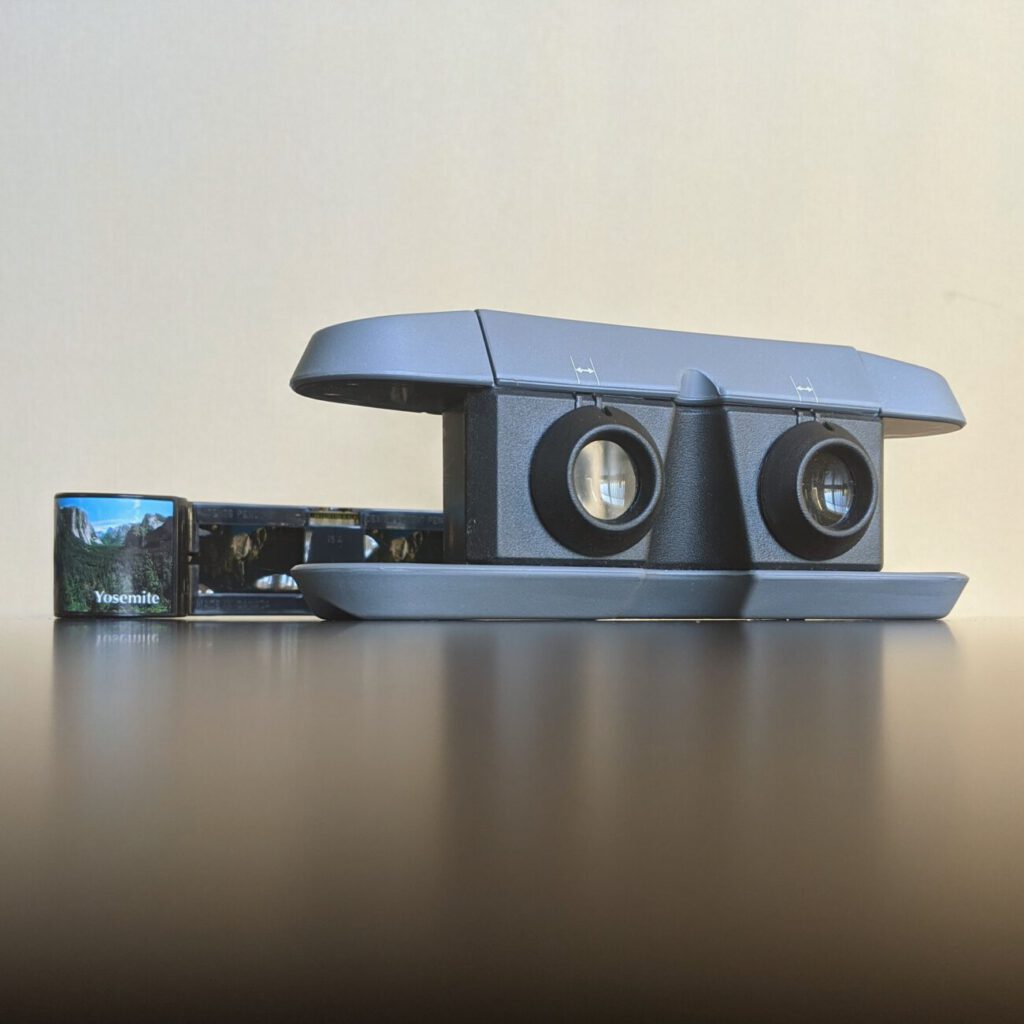Mid-Century 35 mm Filmstrip Stereo Viewers
written for the stereosite by Keita Wangari, USA
3D filmstrip viewers are a family of stereo viewers that gained prominence in the early 20th century. In fact, it was a small filmstrip viewer called Tru-Vue that re-introduced 3D viewing as a mid-century pastime, made it more affordable than earlier stereoscope sets, and paved the way in the hearts and minds of consumers for the popular 3D reel & card viewers that would come later. For this reason, Tru-Vue has often been called “the missing link” in stereoscopy. Although Tru-Vue was the most commercially successful filmstrip stereo viewer in the United States, maybe even worldwide, it wasn’t the first. Here, in chronological order, I present some of the most interesting mid-century filmstrip viewers, including those that came before Tru-Vue, co-existed and competed with Tru-Vue and those that followed much later. The scope of this article doesn’t include 3D viewers like Stéréo Alain, Celde, Pendoplast and Stereo-foto that use stereo transparencies in a roll format.
Homéos, 1910’s
Dating to around 1914, this 3D filmstrip viewer is an accessory to the Homéos stereo camera (which is said to be the world’s first 35mm stereo camera) and was created by the French industrialist Jules Richard who helped spread stereo photography to the masses with the popular Vérascope line. The Homéos viewer is a small wooden viewer that can be found with different variations on the design. One has film canisters on the side to hold the film, a long handle underneath that rotates the film and a lever to adjust the lenses. Another can be found without those features and still another can be found where the eyepieces are shaped differently.
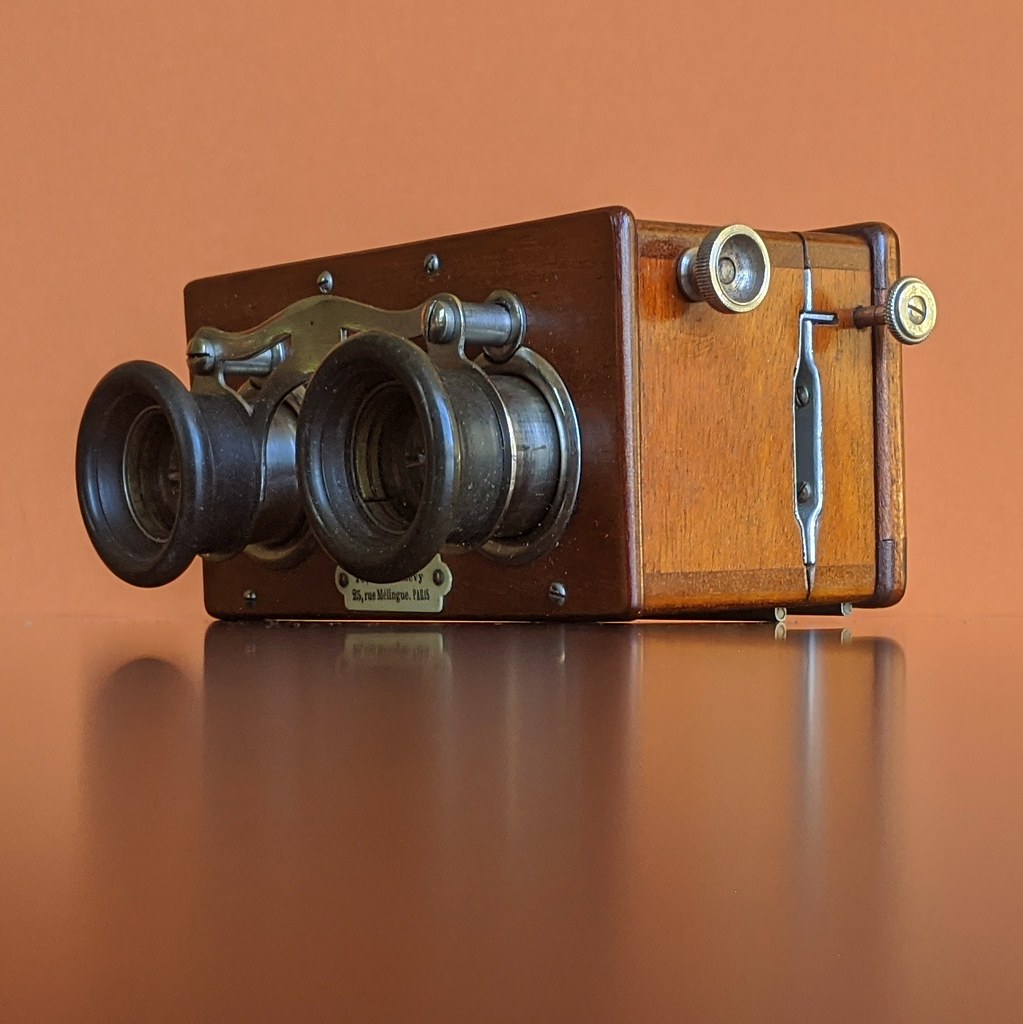
Hollywood Filmoscope, 1920’s
In 1929, an ad in the L.A. Times advertised the first showing of the Hollywood Filmoscope, “a new device that moves a series of views on motion picture film before your eyes in plastic relief.” It sold for $2.50 with extra films going for 50 cents. All 15 films available for it were Hollywood-related. Although this small metal viewer says Hollywood on it, an article in the Santa Ana Register dated March 15, 1929 stated that a Laguna Beach, CA company called Craftsman Studios signed a contract to produce 200,000 Filmoscope devices. According to that article, the device should say “Made in Laguna Beach, California” on it but I’ve not seen any with that wording. Patent was applied for in 1928 by Andre Barlaiter and granted in 1931. The device is rare and the films are extremely rare.
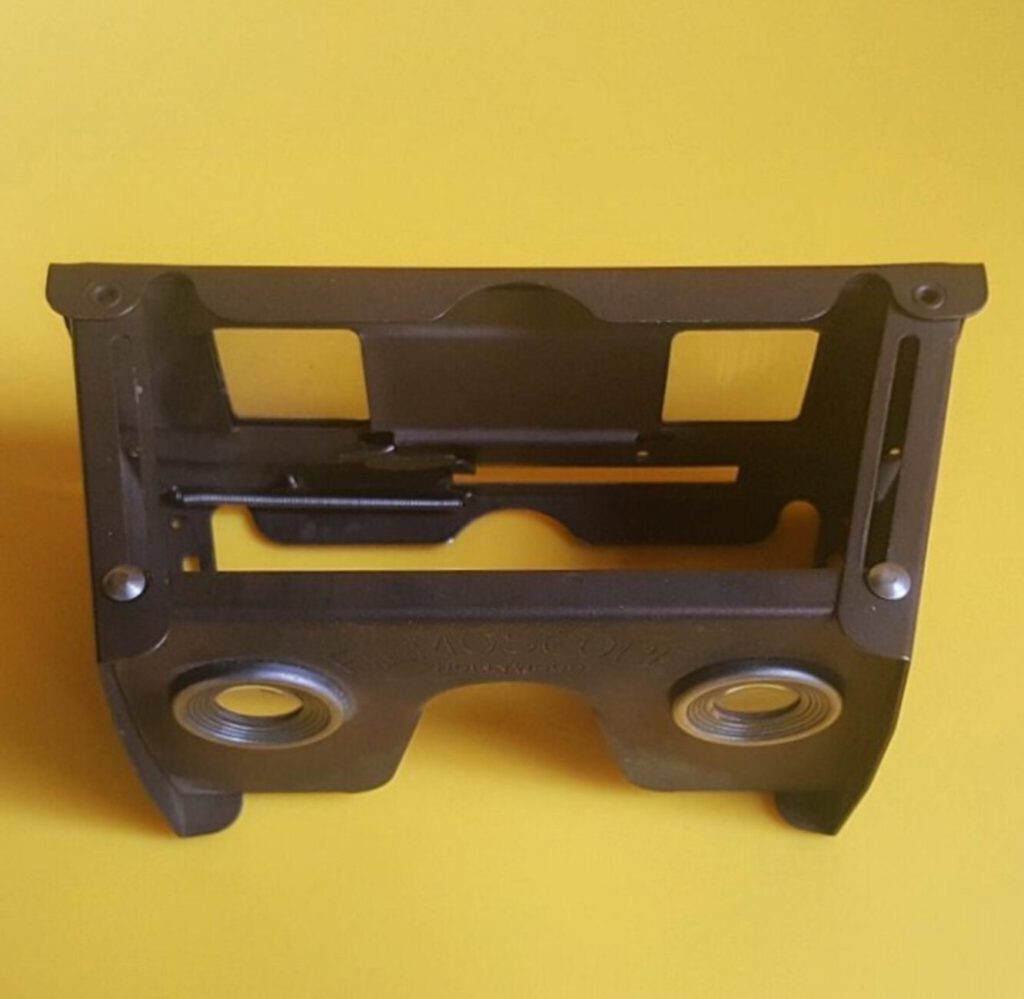
Colleen Moore Magic Theatre
Colleen Moore was a famous silent movie star with a passion for building doll houses. In the late ’20s, she spent today’s equivalent of $7M to build an elaborate dollhouse. In the 1930’s, the Magic Theatre viewer and its accompanying film served as an advertising piece for the dollhouse. The cardboard version consists of 2 separate pieces — one piece is inserted completely inside the other. The wood version, which may be an early prototype, is one piece. A complete set with intact viewer, film, and brochure, all in good condition, is rare.
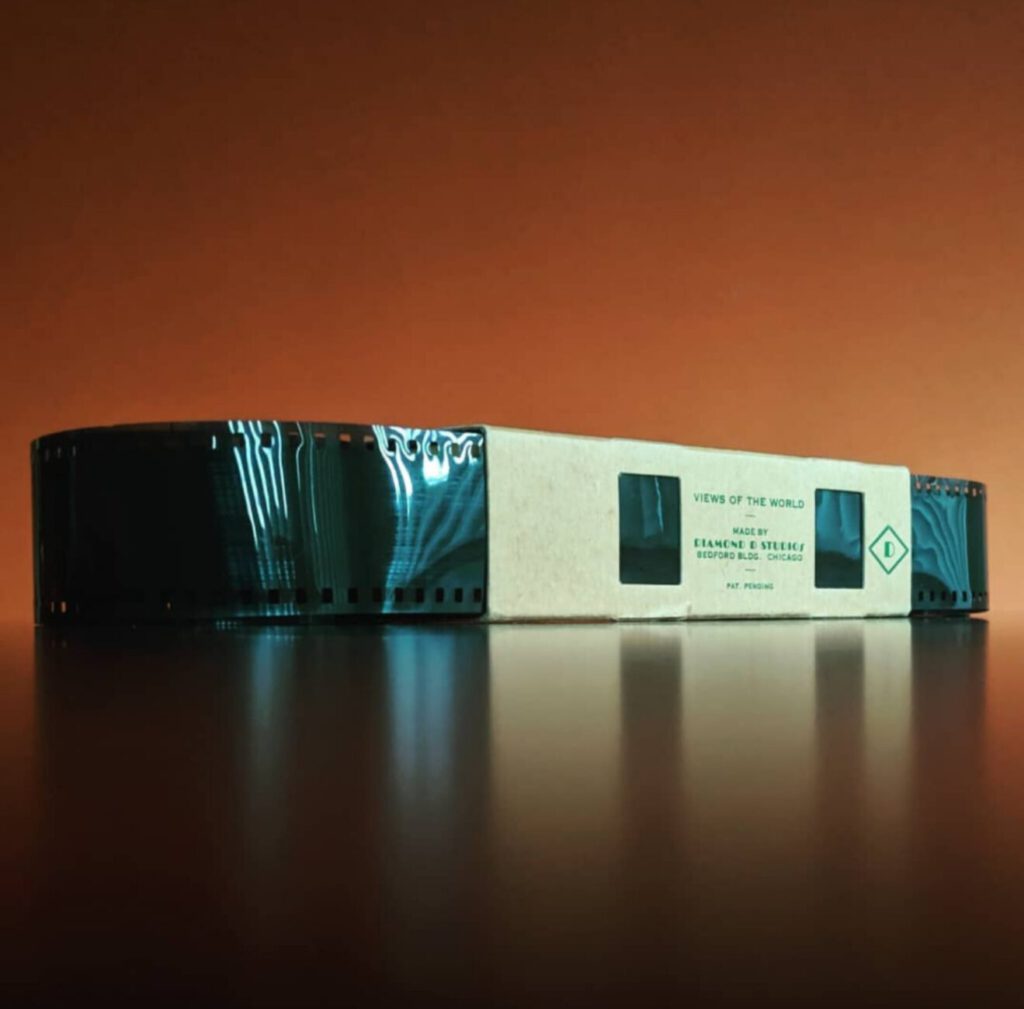

DeVry, 1930’s
This viewer has ties to today’s DeVry University and at least one of its films has ties to the Olympic swimmer Jam Handy. The DeVry stereo viewer out of Chicago was created by the movie projection company DeVry Corp which was founded by Herman DeVry. It competed with Chicago-based Tru-Vue by also selling films of the 1933 Century of Progress World’s Fair. In addition to the 6 films for the world’s fair, DeVry partnered with the Jam Handy Picture Service (also out of Chicago) to produce a 56-frame commercial film for Goodyear. Besides being an Olympic swimmer, Jam Handy’s company was well-known for producing tons of training films for the military and auto companies. As for the tie to DeVry University, in 1931 the same Herman DeVry founded DeForest Training School (named after his friend), it was renamed DeVry Technical Institute in 1953, then renamed DeVry Institute of Technology in 1968, then came partnerships, stock, acquisitions and a DeVry Inc came to be, then a DeVry Education Group and somewhere in the mix DeVry University was born.
Novelview, 1930’s
An ad in the Dayton Daily News dated February 26, 1939 announced “the amazing ‘Novel-viewer’ as “a new scientific marvel” that could be obtained, along with the Treasure Island film, for 10 cents plus one seal from a 1 lb can of Cocomalt. Like DeVry, Novelview (also known as a Moviescope) was yet another competitor to Tru-Vue and was produced by the Novelart Company in New York. There are approximately 65 unique film titles, the rarest and most valuable being a series of baseball films. There are 2 versions of the viewer — one with a silver faceplate that slides in and out to advance the film and one a brown faceplate and a knob to advance the film. The silver version can usually be found as part of a radio promotion package advertising Jack Armstrong’s Jungle Adventure. The film, featuring Jack Armstrong in Africa, was a promo sponsored by Wheaties on the Jack Armstrong radio show. A complete version of that package with viewer (not rusted), intact film, brochure, and box is hard to find.
Tru-Vue, 1930’s
The Tru-Vue filmstrip stereo viewer was produced by Rock Island Bridge & Iron Works in Rock Island, Illinois, United States. As mentioned earlier, Tru-Vue ushered in a whole new generation of 3d viewing. I could spend 10 pages going through its history, marketing, and the evolution of its viewers in the decades before and alongside View-Master. However, in the interest of space in this article, I’ll just highlight a few things and then write a separate article just on Tru-Vue. Joshua H. Bennett invented the first Tru-Vue stereoscope after experimenting with the concept for many years and brought the idea with him when he came to work for Rock Island Bridge & Iron Works in 1933. Originally, the device was used to document and showcase the dam being built over the Mississippi river but the opening of the 1933 Century of Progress World’s Fair in Chicago presented a whole new marketing opportunity that they took advantage of. Tru-Vue would go on to create numerous styles of viewers, over 400 consumer films and many commercial films. They would eventually lose business to Sawyer’s View-Master and become acquired by them.
True-View, 1950’s
The elephant in the room: almost an exact copy of the 1940’s Tru-Vue stereo viewer is the differently spelled “True-View” filmstrip viewer from S.E.L. (Signalling Equipment, Ltd) out of England. There are a couple of different theories as to how they came to produce exact replicas of Tru-Vue’s viewer, packaging, instruction sheet — everything! — without suffering harsh consequences from Tru-Vue. I discovered a new clue in a 1949 article where Tru-Vue’s chief sales rep Fred B. Ingram stated, “England is out at the moment, because of the pound devaluation. Previously, London was one of our big foreign markets.” Given that particular insight, it makes sense that a “different” version would suddenly appear in that market and quickly capitalize on the absence of the original Tru-Vue by visually duplicating Tru-Vue’s assets. Their films are different though — a set of 30 filmstrips focusing on London scenery, the Betram Mills’ Silver Jubilee circus, British railways and other England-related subjects.
Verascope F40, 1940’s
Out of France in the late 40s & early 50’s, this beautiful filmstrip viewer was a companion to the F40 camera. It takes in light from a diffuser on its top and has a reversing prism behind each lens so you can view image pairs in 3D directly from the camera, without having to cut, flip and mount the images. The first version was mahogany & chrome. A later version was made from black bakelite and was designed to completely contain the filmstrip inside the unit. Both could be mounted on a stand which is extremely hard to find today.
Sightseer, 1950’s
This small bakelite stereo filmstrip viewer from API, Ltd in England is fairly hard to find, as are the films. The viewer came in at least 3 colors that I’ve seen and there are about 204 Sightseer films ranging in topics from city scenics (Oxford, London, Canterbury, Edinburgh, etc.) to Locomotives, Madame Tussaud and a Dog Show.
Pan-Pet, 1970’s
Jumping a couple of decades ahead to the ‘70s, Japan hosted its first world fair in Osaka in 1970 called Expo ’70 — the theme was Progress and Harmony for Mankind. Thanks to Gakken in Japan producing this plastic panoramic filmstrip viewer, we can see panoramic views of the fair in 3D! In addition to 5 series of films from the Expo, Pan-Pet produced films on golf, trains and nudes.
3Discover, 1990’s
Lastly, we’ll again take a 2‑decade jump to the 90’s to take a look at this the battery-operated, cartridge-based, panoramic stereo filmstrip viewer 3Discover by 3D Vision in Canada. You can advance the film in either direction using the buttons on top of the viewer and it makes a cool, and oddly satisfying, whirring sound as the picture changes. There are over 20 cartridges available, covering subjects from travel to the solar system to insects to Celine Dion and the quality of the color images is superb.
Keita Wangari (Cupertino, California, USA)
My love of stereoscopy, which is focused on the viewers rather than the images, started when I stumbled across a Century of Progress World’s Fair Tru-Vue viewer in an antique shop 3 1/2 years ago and I’ve since amassed a large collection of stereoscopes from all over the world, mostly from the mid-century time period (1935–1965). I’m particularly fond of branded 3D viewers used for advertising, folding 3D viewers, cardboard 3D viewers, and mid-century 35mm stereo filmstrip viewers like Tru-Vue, DeVry, Novelview, Filmoscope, and Sightseer.
Website: www.vintageviewers.com
Instagram: 3dcollector

